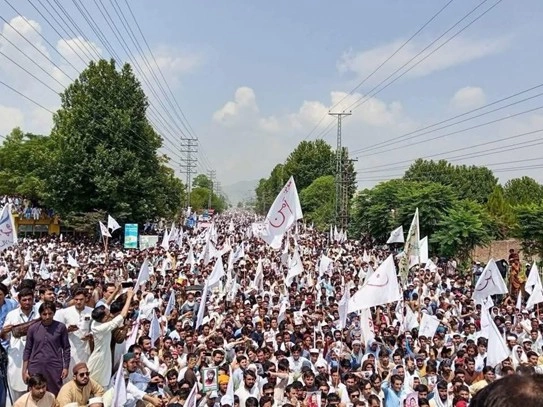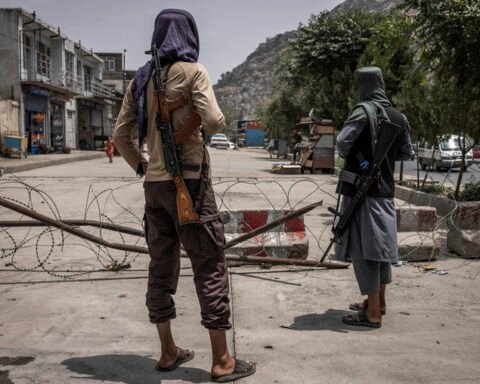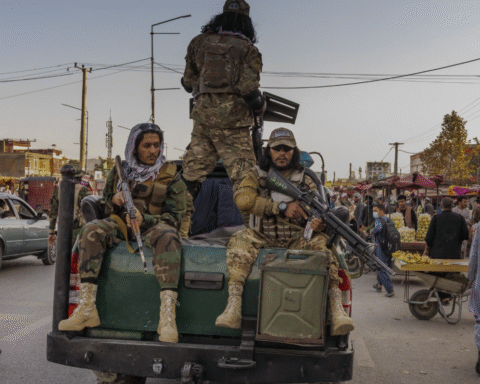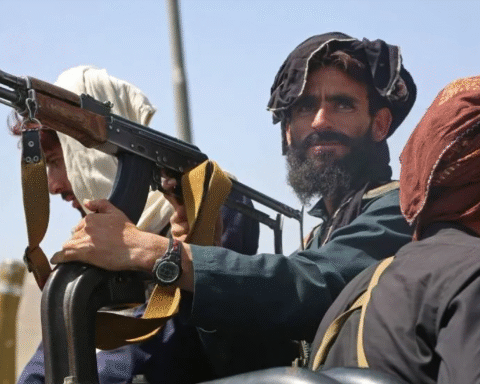When the Desert Wind Howls
Not all who run are seeking refuge some carry the storm with them.
So it was in the tribal belt of Khyber Pakhtunkhwa (KP), where the Bajaur Aman Pasoon, marketed as a “peace march,” transformed into a spectacle of incendiary rhetoric, veiled threats, and calculated political provocation. What began as an ostensibly organic expression of tribal concern swiftly revealed undercurrents that challenge the fabric of Pakistan’s national cohesion and feed directly into the hands of its detractors.
Held on July 11 in the bustling Bara Bazaar of Khyber District, the Pasoon was orchestrated by the Bara Siyasi Ittehad, a coalition of local and national actors. On its surface, the demands raised calls for security, transparency in military operations, and restitution for civilian losses resonate with the deep scars borne by communities living in Pakistan’s conflict-affected borderlands. Yet, buried beneath the appeals for justice were messages distinctly out of tune with a constructive peace process. These included direct accusations against state institutions, rejection of constitutional mechanisms, and public endorsements of civil disobedience and armed defiance.
Weaponizing Rhetoric
In an emotionally charged environment, speakers such as PTI MNA Iqbal Afridi and PTM affiliates chose to frame Pakistan’s two-decade fight against terrorism as a foreign-imposed “dollar war”, a narrative closely aligned with hostile information campaigns targeting the Pakistani military. The portrayal of Pakistan’s security efforts as both self-serving and externally dictated is a gross misrepresentation of facts, disregarding the immense human and financial costs borne by the nation, particularly its border regions.
More critically, the movement’s rhetoric did not merely critique policy, it vilified national institutions and advocated for boycott, economic shutdowns, and even retaliatory killings. Such language, particularly when delivered in a volatile region with a history of militancy, amounts to more than political theatre; it risks reactivating dormant fault lines and emboldening extremist actors who thrive in ambiguity and unrest.
Peace in the Guise of Provocation
What makes the Pasoon movement especially problematic is its careful balancing act: cloaking provocation in the language of peace, rebellion in the garb of justice. This duality complicates the task of international observers and domestic stakeholders alike. While there is no denying that genuine grievances persist in tribal areas delays in compensation, perceptions of selective security enforcement, and gaps in civilian administration the solution lies not in rejectionist populism, but in institutional dialogue and collaborative reform.
Equally concerning is the role of political opportunism in inflaming the situation. Several figures who have previously held power in KP now appear to be leveraging public dissatisfaction to obscure their own governance failures. The timing of the Pasoon, amid increasing scrutiny of financial mismanagement and waning political support, raises valid questions about motive. In this context, the movement becomes less an organic uprising and more a calculated maneuver to reframe the public narrative.
A State Evolving Beyond Militarization
It is also worth noting that Pakistan’s approach to its tribal belt has evolved significantly in recent years. From the merger of FATA into KP to the expansion of infrastructure and social services, the state has moved toward integration rather than militarization. Operations like Bad-e-Khyber, a hybrid campaign addressing both security and development deficits, underscore this shift. In this environment, bypassing official channels in favor of ultimatums and blockades undercuts the very dialogue that communities need.
Foreign Policy Fallout
From a foreign policy standpoint, the Pasoon movement inadvertently complicates regional dynamics as well. The demand for the Pakistani state to negotiate jointly with the Islamic Emirate of Afghanistan and tribal actors on internal security issues sidesteps diplomatic protocol and undermines Pakistan’s sovereign governance. Furthermore, by framing the war on terror as externally manipulated, such narratives provide fodder for international adversaries looking to delegitimize Pakistan’s counterterrorism credentials.
A Delicate Crossroads
In essence, the Bajaur Aman Pasoon exposes a dangerous convergence of populist frustration, political opportunism, and rhetorical overreach. It is a reminder that peace, when pursued outside the architecture of the state, can become a vessel for discord. While the grievances of tribal populations must continue to be addressed, they cannot be allowed to morph into platforms for rebellion masquerading as reform.
The Way Forward
For policymakers, the path forward requires precision. It demands listening without yielding to coercion, and engaging without legitimizing inflammatory discourse. Strengthening local governance, accelerating justice delivery, and maintaining an unwavering commitment to development are key. But equally essential is defending the integrity of Pakistan’s institutions and ensuring that peace remains a shared objective, not a slogan for disruption.
Because when a march for peace begins to sound like a drumbeat of rebellion,
the question is not just who is marching, but who is leading.
And, more crucially, to where.







